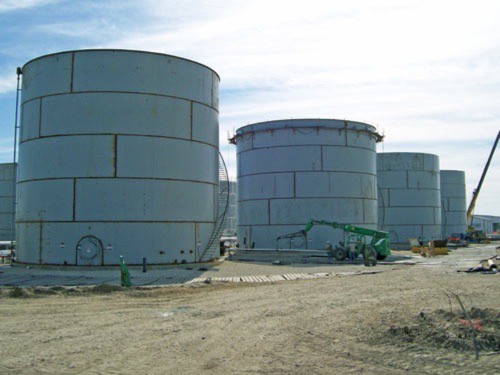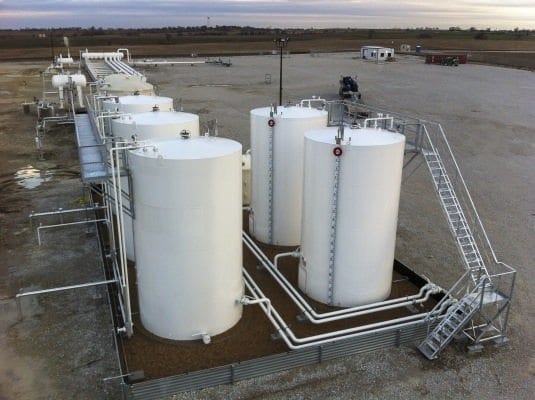Understanding the Fundamentals Behind API 650 Welding Inspection Procedures
Exactly How Welding Inspection Functions: A Comprehensive Guide for Professionals
Welding examination plays an essential function in making certain the security and dependability of welded frameworks. It entails an organized approach that includes both aesthetic evaluation and progressed testing approaches. Experts must familiarize themselves with key requirements and regulations governing the market. Recognizing the common flaws that can emerge throughout welding is vital. This overview will certainly check out these components thoroughly, giving insights right into the procedures that copyright top quality and honesty in welding.
Comprehending the Value of Welding Inspection
While lots of might undervalue the value of welding evaluation, it plays an essential duty in ensuring the honesty and safety of welded structures. Efficient welding evaluation recognizes possible problems and problems that can endanger structural strength and lead to devastating failures. The inspection procedure includes different techniques, such as aesthetic exams, ultrasonic testing, and radiographic assessments, each adding to the general analysis of weld top quality.
Along with safeguarding the structural integrity, welding inspection guarantees compliance with market standards and customer specifications. By making sure that welds fulfill required resistances and attributes, evaluations help maintain the dependability and longevity of parts in various applications, from building to aerospace. Moreover, a rigorous examination process promotes a culture of high quality and liability among makers and welders. Ultimately, welding evaluation is not simply a procedural action; it is a crucial practice that underpins the safety and security and efficiency of engineered systems across diverse sectors.
Trick Specifications and Regulations in Welding Assessment
The structure of effective welding evaluation hinges on adherence to developed guidelines and standards. Various companies, such as the American Welding Culture (AWS) and the American National Specification Institute (ANSI), stated standards that guarantee quality and security in welding practices. Key requirements, such as AWS D1.1 for architectural welding and ASME Section IX for pressure vessels, supply detailed standards for welding certifications, inspections, and treatments. Regulative structures, including those from the Occupational Security and Health Administration (OSHA), required security methods and employee defenses in welding environments. Compliance with these standards is crucial for attaining regular weld top quality and minimizing the risk of failures. Additionally, international criteria like ISO 3834 further improve global uniformity in welding evaluation practices. Specialists have to stay educated regarding these policies to guarantee that their examination techniques align with sector expectations and lawful requirements, consequently securing both personnel and architectural stability.
Initial Prep Work and Aesthetic Examination Techniques

Effective welding assessment starts with a complete pre-inspection list that assures all required problems are met before the actual inspection happens. Following this preparation, visual flaw identification plays a crucial function in evaluating weld top quality, enabling assessors to identify problems such as splits or inappropriate fusion. With each other, these techniques create the structure for an effective welding evaluation procedure.
Pre-Inspection Checklist
Before beginning any type of welding examination, a thorough pre-inspection list is vital to assure that all essential preparations are finished which aesthetic examination strategies are properly used. Key aspects of this checklist consist of verifying the welding treatment requirements (WPS), making certain all devices is calibrated and in great working condition, and confirming that the examiner has the required certifications. In addition, it is crucial to evaluate any kind of previous evaluation reports and to analyze the work setting for safety dangers. The examiner ought to likewise confirm that all appropriate paperwork, such as product certificates and examination documents, is conveniently offered. Finishing this list helps to establish a strong foundation for an effective inspection procedure, enhancing the dependability of the outcomes acquired.
Visual Problem Recognition
An effective aesthetic defect recognition procedure begins with careful initial preparation and the application of well-known aesthetic examination strategies. Inspectors need to ensure that the welding location is tidy and well-lit, as sufficient visibility is important for spotting problems. An extensive examination of the weld joint's surface enables the recognition of interruptions, such as fractures, undercuts, or porosity. Assessors typically utilize devices like magnifying glasses or mirrors to boost their view of hard-to-reach areas. In addition, they ought to be acquainted with the particular welding criteria and standards appropriate to the job. By adhering to these methods, assessors can efficiently recognize potential problems, protecting the stability of the weld and compliance with industry standards.
Non-Destructive Screening Techniques: An Introduction
Non-destructive testing (NDT) methods play a crucial role in the welding inspection process by making certain the honesty and integrity of welded structures without creating any damages (API 650 Welding Inspection). These strategies allow examiners to evaluate the high quality of welds while protecting the elements being checked out. Common NDT methods include ultrasonic testing, radiographic screening, magnetic fragment screening, and color penetrant testing, each offering one-of-a-kind benefits
Ultrasonic screening uses high-frequency audio waves to discover interior problems, while radiographic screening makes use of X-rays or gamma rays to visualize the inner framework of welds. Magnetic fragment screening exposes surface area and near-surface problems by applying an electromagnetic field and iron bits to the weld area. Dye penetrant testing highlights surface-breaking defects with the application of a colored dye. Together, these NDT approaches give essential insights into weld quality, enabling experts to make enlightened choices relating to safety and security and compliance in welding applications.
Typical Flaws and Their Implications
Recognizing usual flaws in bonded joints is crucial for maintaining architectural stability and safety and security. Different problems can occur throughout the welding process, each bring prospective ramifications for the overall performance of the structure. Porosity, characterized by small gas pockets within the weld, can compromise the joint and compromise its load-bearing ability. Splits might develop because of thermal anxiety or inappropriate straight from the source cooling, leading to potential failing under tension. Incomplete combination takes place when the weld steel does not totally bond with the base product, leading to weak joints that may not withstand intended tons. Damaging, where the base metal is eroded, can also decrease the reliable cross-section of the weld. In addition, excessive support can develop stress focus that might bring visit homepage about failing. Identifying these problems without delay enables corrective measures, guaranteeing the longevity and integrity of welded structures in vital applications.
Tools and Equipment Utilized in Welding Inspection
Efficient welding assessment depends on a range of specialized devices and devices to ensure the quality and integrity of welded joints. Vital tools consist of aesthetic evaluation tools, such as magnifying glasses and borescopes, which allow assessors to very closely check out welds for surface issues. Non-destructive screening (NDT) techniques, such as ultrasonic screening, radiographic testing, and magnetic bit testing, are fundamental for recognizing internal flaws without harming the product.
Dimension devices, including calipers and weld evaluates, assist determine and assess measurements compliance with specs. Additionally, solidity testers examine the mechanical residential properties of welded joints. Personal protective tools (PPE) is also critical, securing the safety of assessors while operating in see here possibly hazardous settings (API 650 Welding Inspection). Each device serves a details function, collectively improving the performance of welding assessment and adding to the integrity of completed jobs
Regularly Asked Concerns
What Certifications Are Needed to Become a Welding Inspector?
To become a welding assessor, individuals normally need appropriate certifications, such as AWS CWI or CSWIP, in addition to experience in welding procedures, design principles, and understanding of inspection strategies, safety standards, and suitable codes.
Exactly How Often Should Welding Inspections Be Conducted?
Welding assessments ought to be carried out consistently, preferably at numerous job stages, consisting of pre-weld, during-weld, and post-weld. Regularity might additionally depend on industry standards, project specs, and the complexity of the welds entailed.
Can Welding Defects Be Repaired After Assessment?

Yes, welding problems can frequently be repaired after evaluation. Relying on the severity and type of flaw, proper methods such as revamping or extra welding may be employed to recover structural integrity and safety compliance.
What Industries Require Routine Welding Inspections?

Different industries, including construction, manufacturing, aerospace, and auto, need routine welding assessments - API 650 Welding Inspection. These inspections ensure adherence to safety standards and quality assurance, lessening risks related to structural stability and functional efficiency in welded elements
How Do I Select a Welding Evaluation Solution?
To pick a welding inspection solution, one need to take into consideration qualifications, experience, qualifications, and market credibility. In addition, evaluating consumer reviews and ensuring the solution satisfies appropriate requirements can aid ensure high quality inspections and dependable results.

While several may ignore the relevance of welding assessment, it plays a vital function in making certain the integrity and security of bonded frameworks. Trick criteria, such as AWS D1.1 for structural welding and ASME Area IX for pressure vessels, supply complete standards for welding examinations, treatments, and credentials. Efficient welding examination begins with an extensive pre-inspection checklist that assures all required problems are fulfilled prior to the actual inspection takes location. Prior to commencing any type of welding inspection, a comprehensive pre-inspection checklist is crucial to ensure that all necessary prep work are completed and that aesthetic evaluation methods are properly utilized. Non-destructive testing (NDT) approaches play a crucial function in the welding assessment process by guaranteeing the integrity and reliability of bonded structures without triggering any damages.